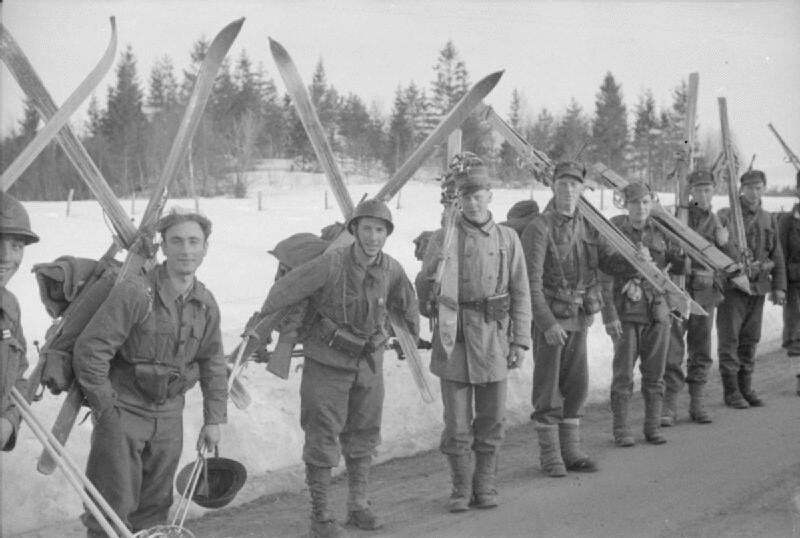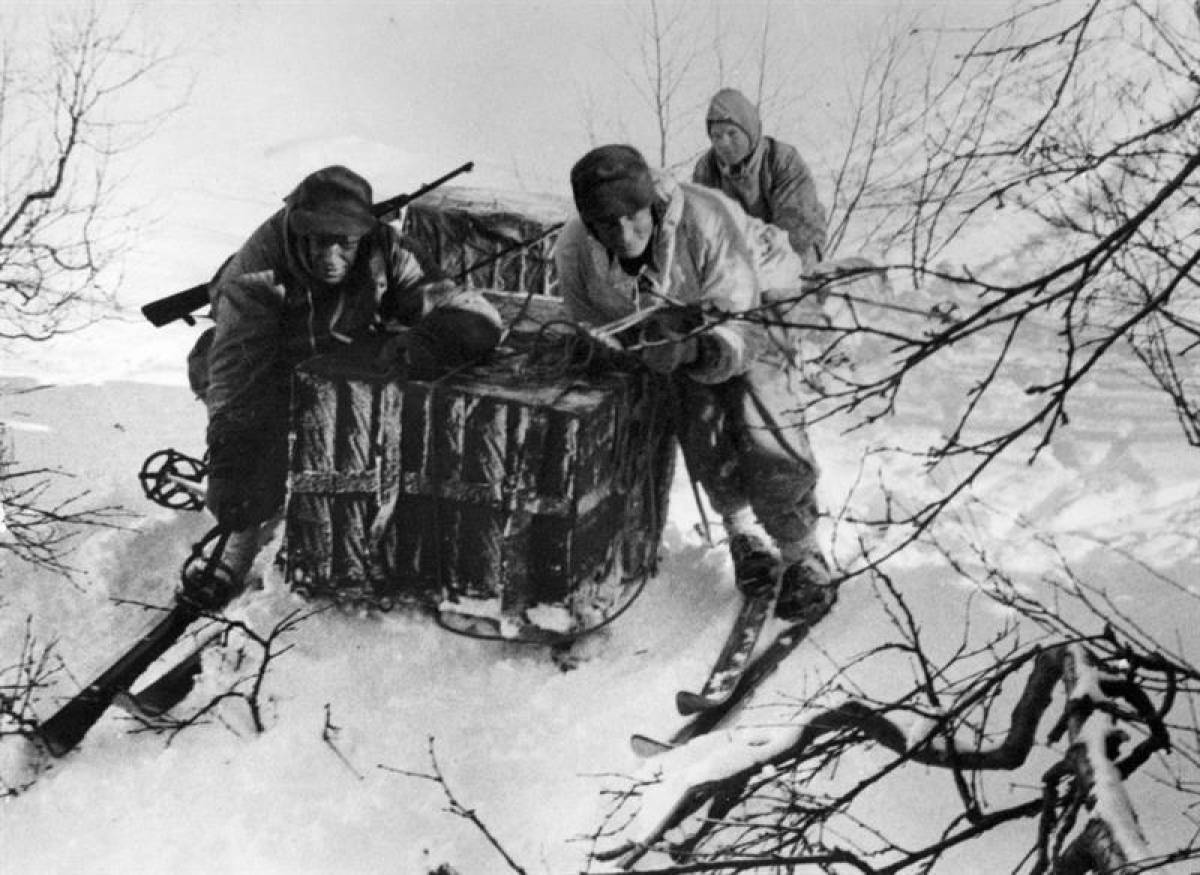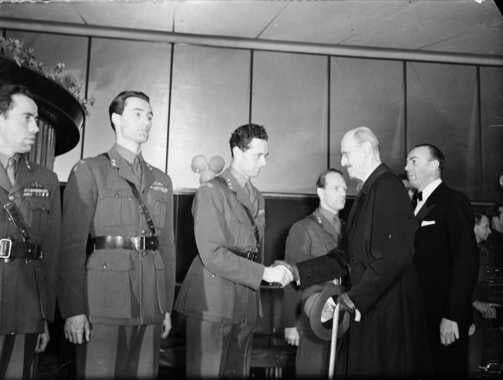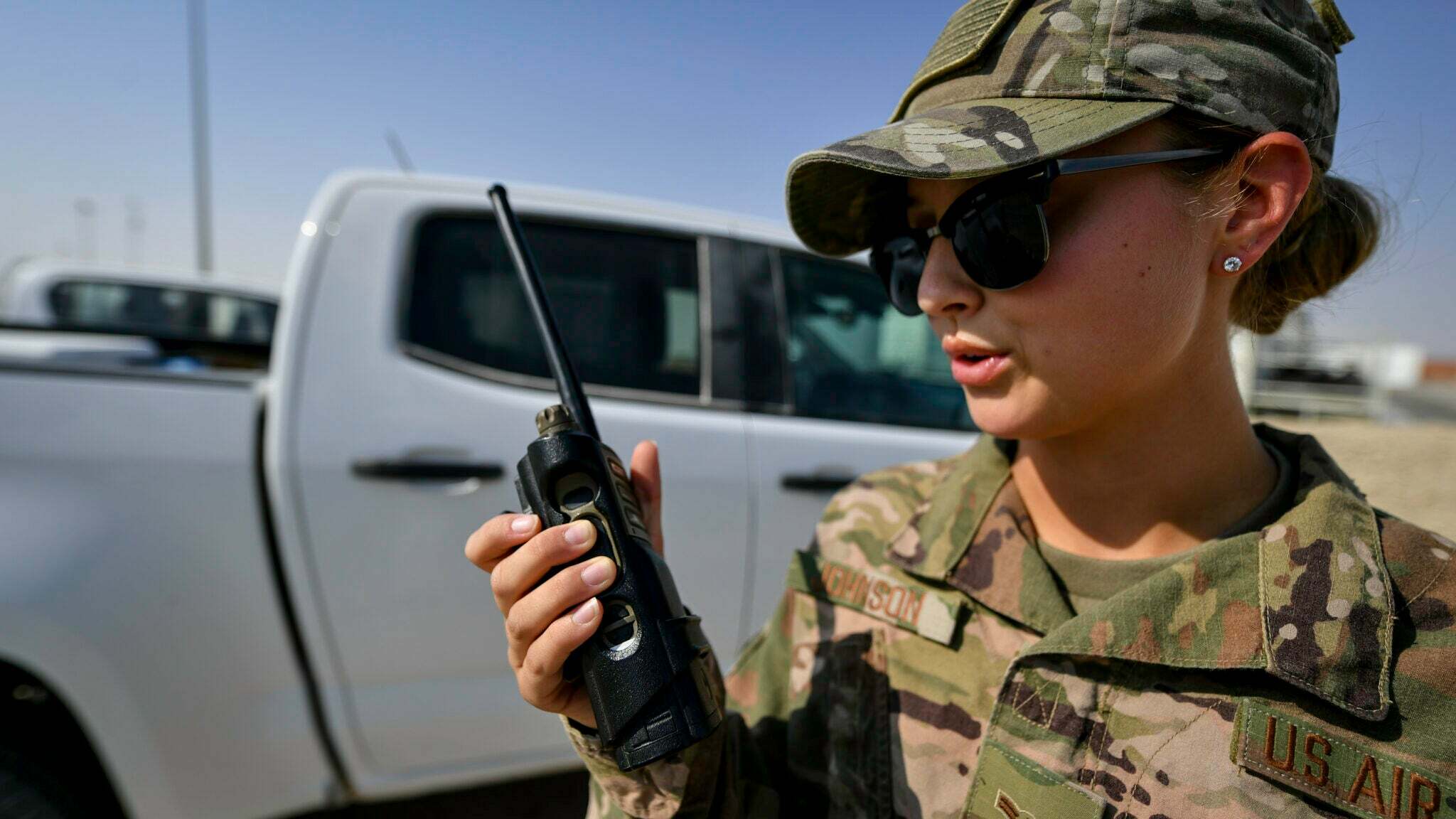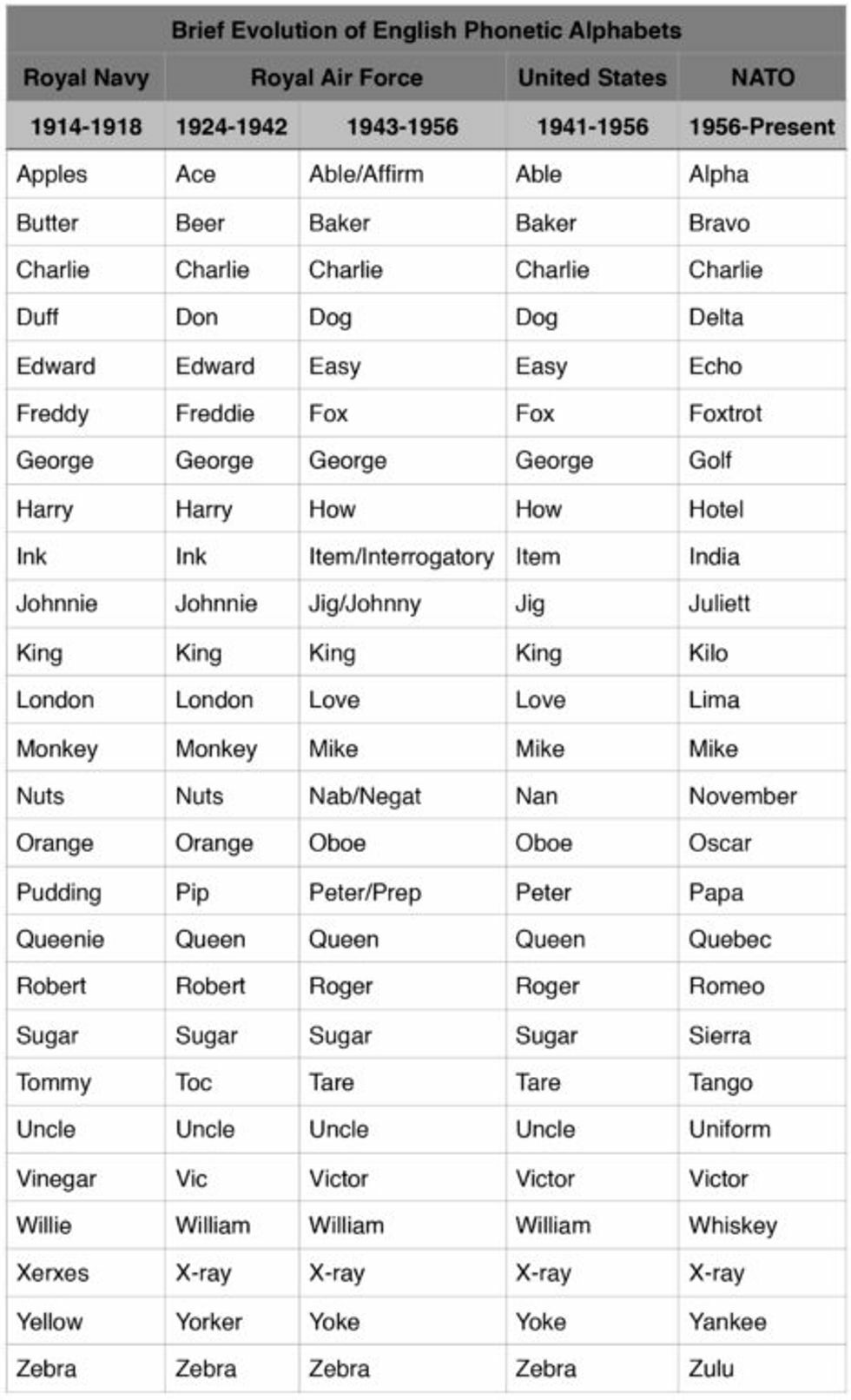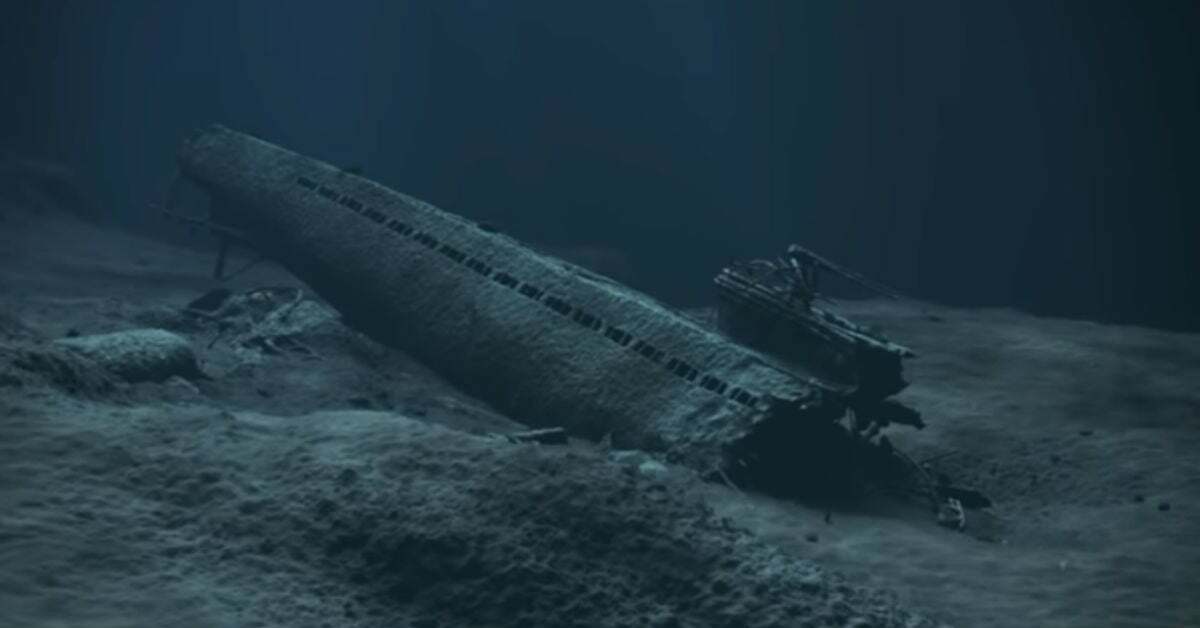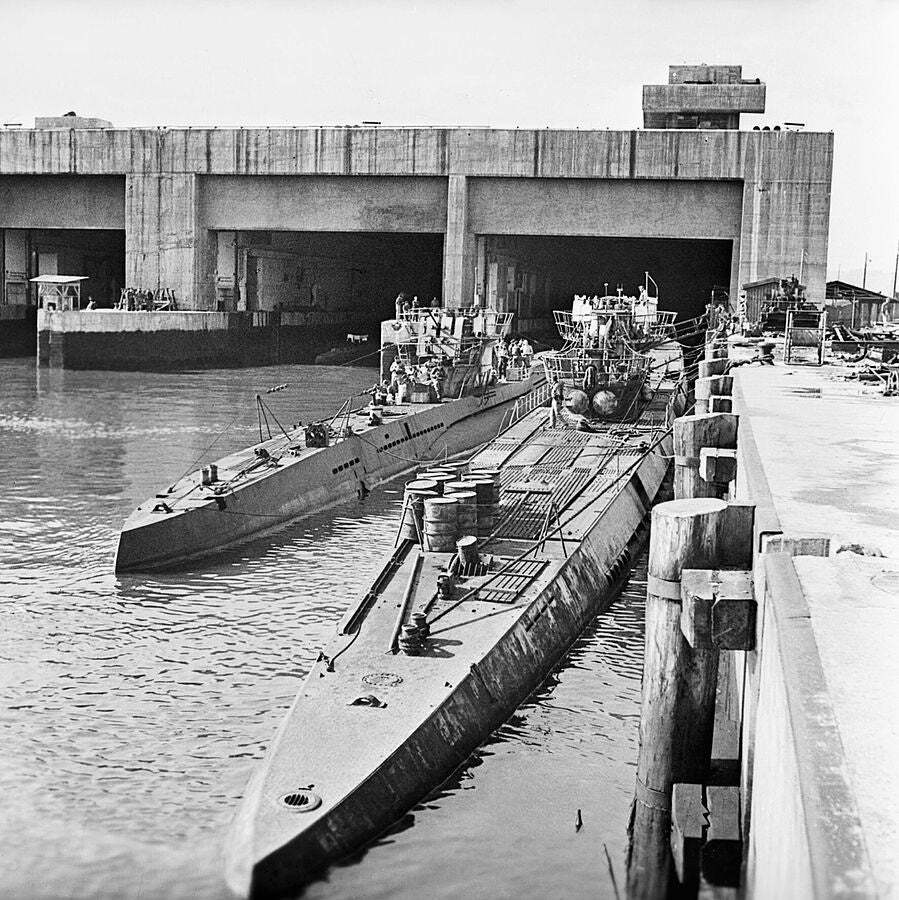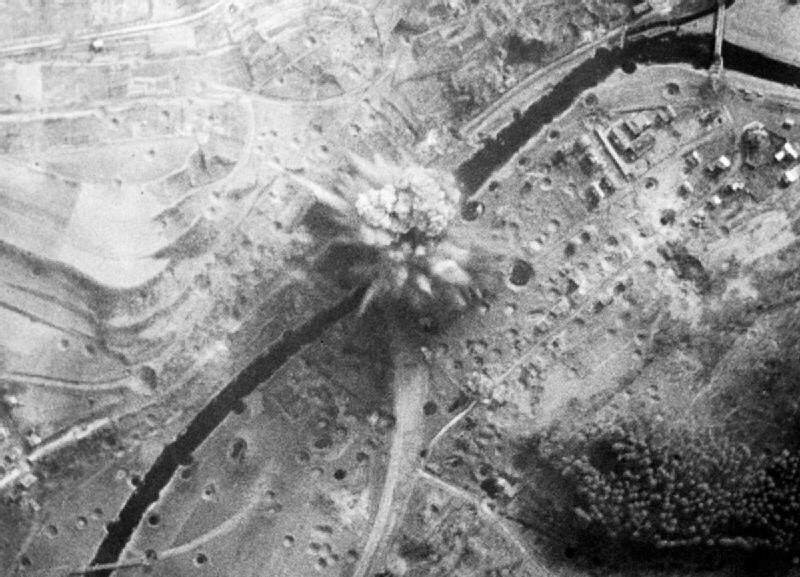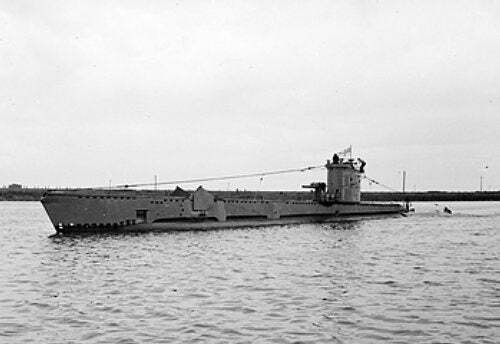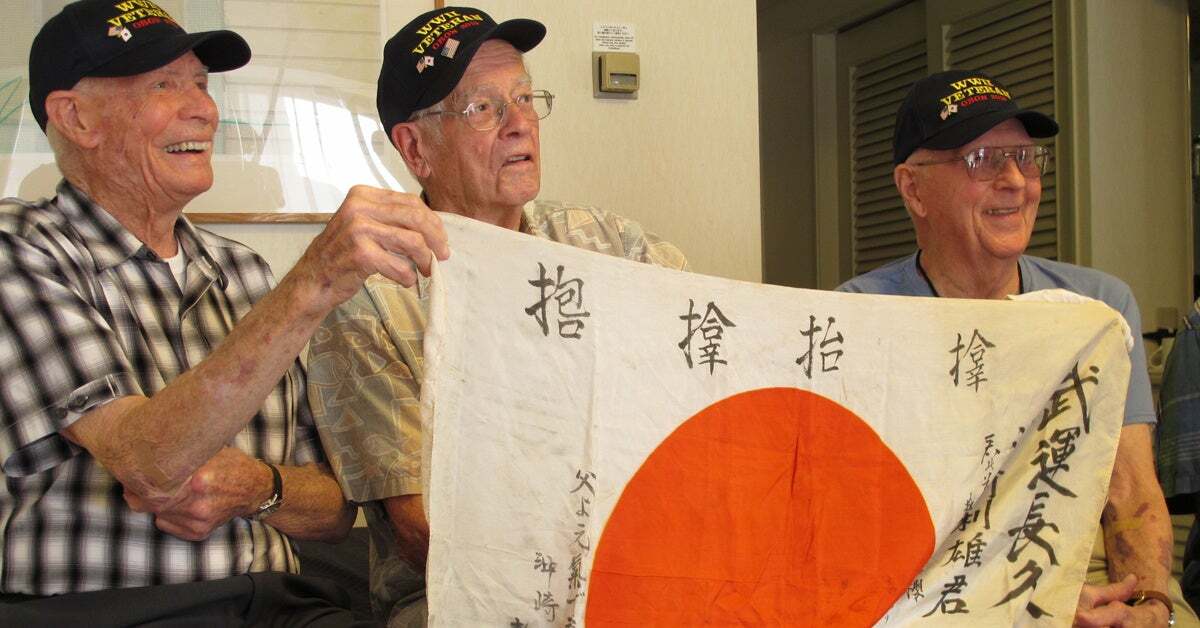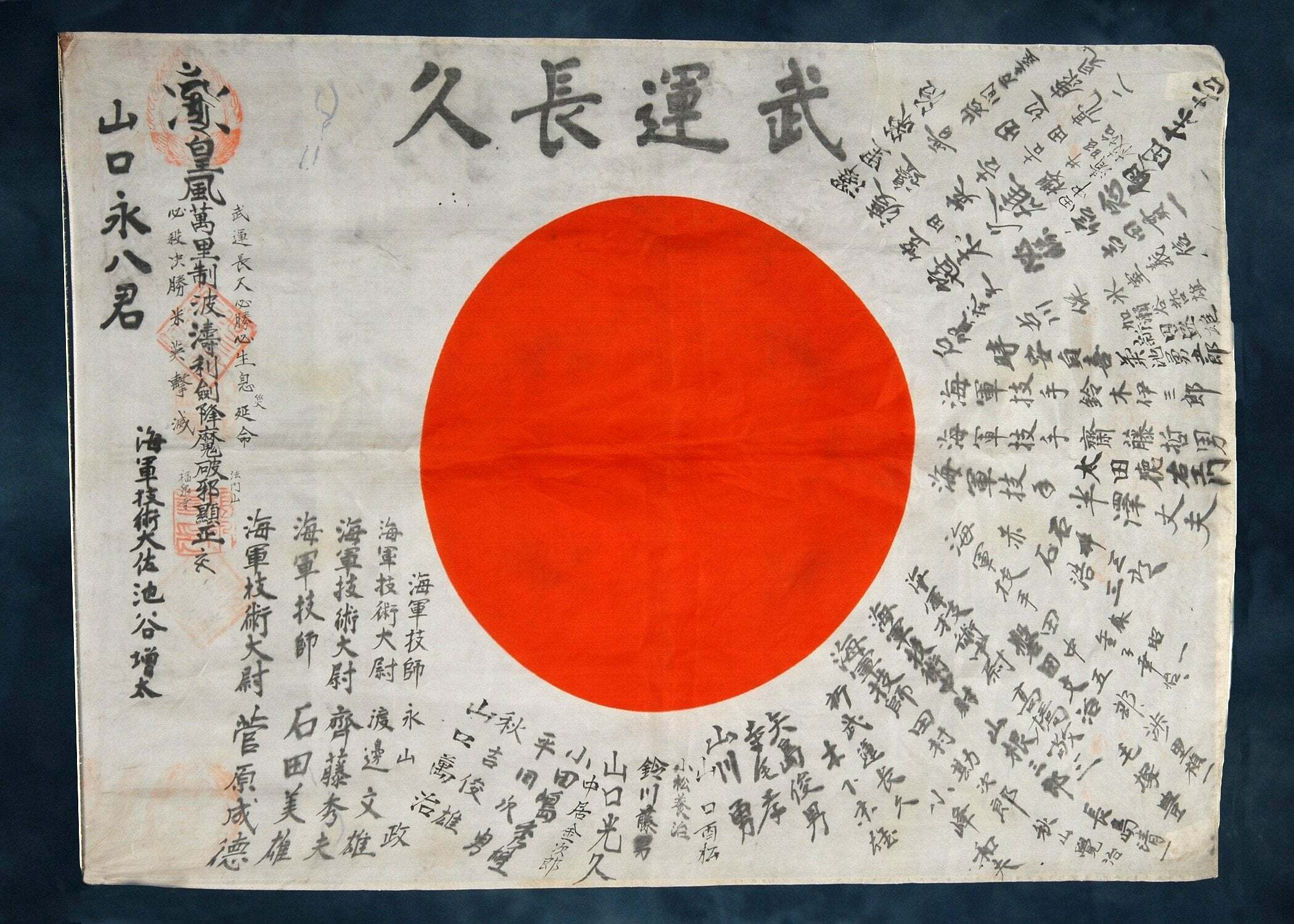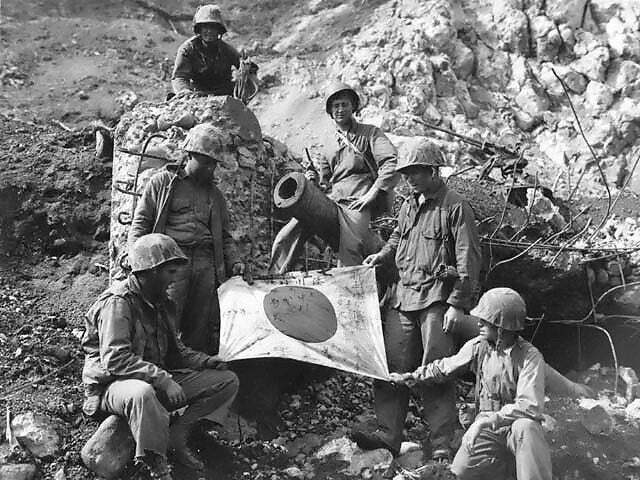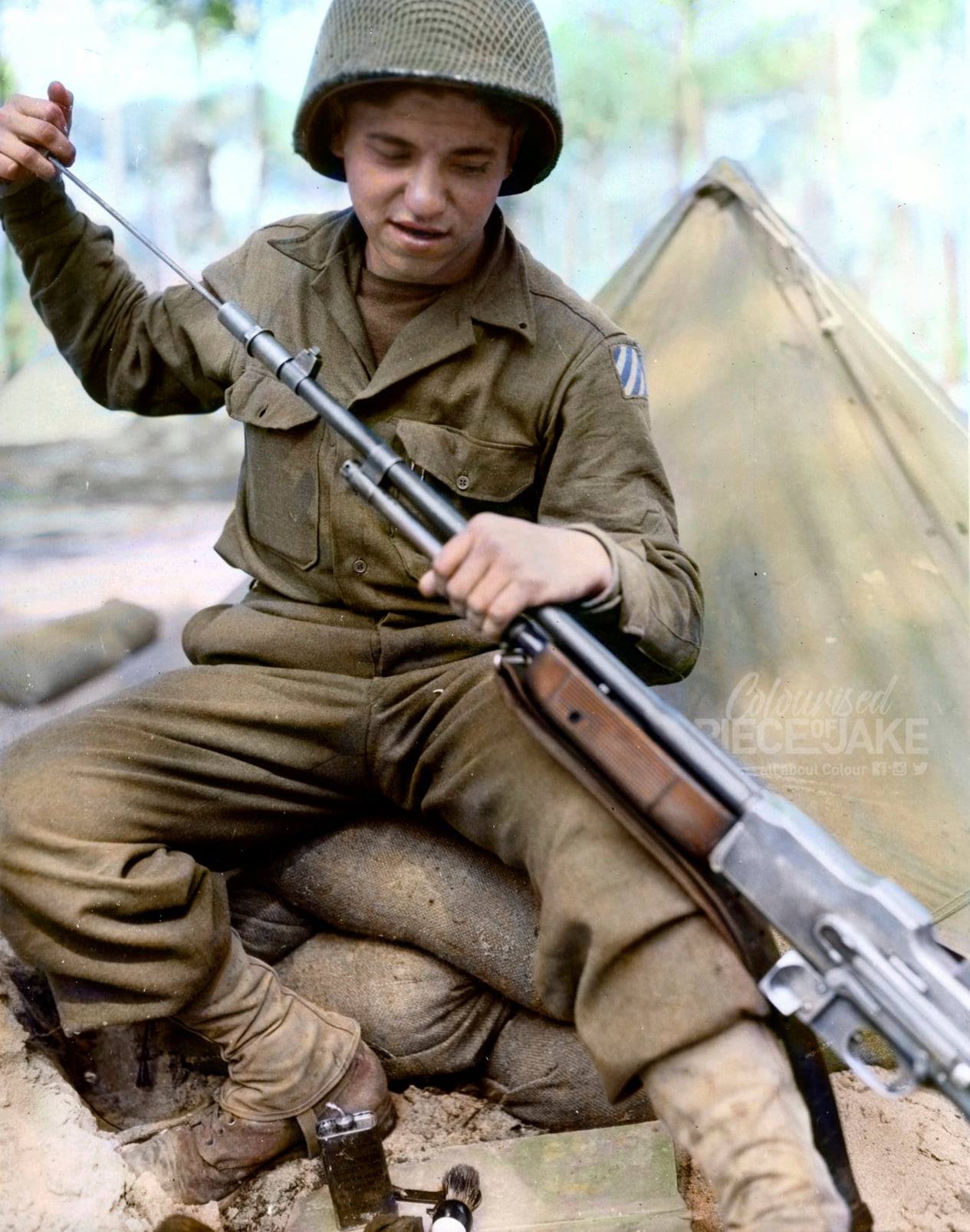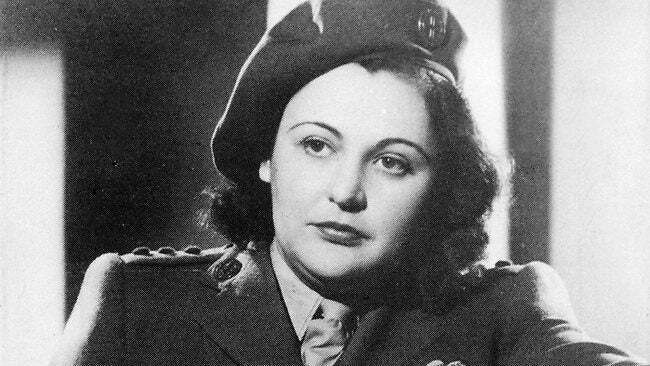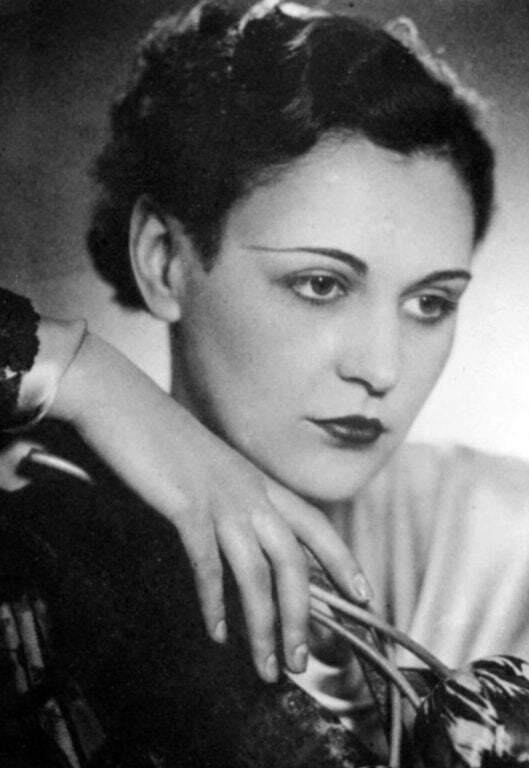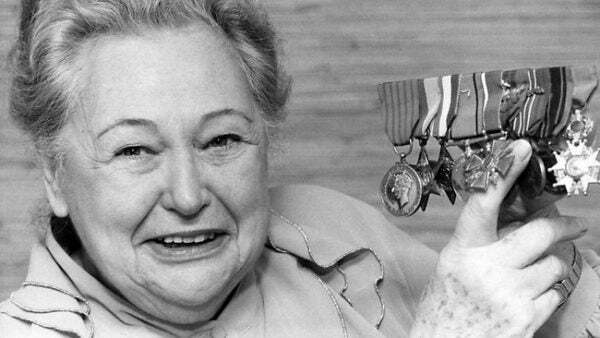- Posts: 1256
- Thank you received: 1781
Sidebar
Login Form
Little stories
- Maki
-

- Offline
Less
More
2 years 10 months ago #61
by Maki
Replied by Maki on topic Little stories
The daring sabotage raid that kept Germans from getting The Bomb
For much of the Second World War, German engineers and scientists were at the top of their game in developing nuclear fission. As early as 1939, the best minds in Germany were put to work on splitting the atom . They were attempting to use heavy water to control the fission process. Their main source of heavy water production was in occupied Norway, which was a devastating mistake.They would never get the chance to develop an atomic bomb because Norwegian resistance fighters would blow up the heavy water facilities rather than help the Germans win World War II.
Their objective, the Vemork Heavy Water facility in Norway.British commandos tried to destroy the Vemork heavy water facilities in 1942 but were unsuccessful . Operation Grouse planned for Norwegian scouts to recon the area and provide intelligence for British commandos, who would land in gliders and assault the facility under Operation Freshman. But the gliders carrying the Freshman commandos crashed in the local area. One hit a mountain, killing everyone aboard. The other crashed, and some of the commandos survived, but were summarily executed by the Gestapo.But the Grouse Norwegians were still operating in the area, living off the land, waiting for further instructions.
With the Norwegians still in position, the plan was given a second go-ahead. The Grouse scouts were now called Operation Swallow and the second raid on Vemork was dubbed Operation Gunnerside. The Gunnerside assault team would be an all-Norwegian squad, parachuting in to rendezvous with the Swallow team. Gunnerside launched on Feb. 16, 1943 – and immediately, things went wrong.Though not as catastrophic as the first raid on Vemork, these problems caused major delays. The infiltrating Norwegians were dropped into Norway under the cover of snowfall, but they were accidentally dropped miles away from their target. It took the team five days to get to Vemork. They made it, though, and were able to connect with the Swallow group.
Unfortunately for the new raiders, the failure of the previous raid on Vemork prompted the Nazis to improve the facilities defenses. All the direct routes into the facility were now heavily guarded or mined. The raiders were forced to climb down into a gorge, cross a frozen river, and then climb a 500-foot cliff wall to access the building. There was a piece of luck for the Norwegians, however. A railroad line in the gorge led to the facility and was relatively unguarded.After cutting into the facility’s fence, the group split into two teams: a four-man explosives unit and a five-man cover unit. The explosives team was accidentally split up after two men entered the facility through an access tunnel. The two others, presumably lost, broke in through a window. Each team set their explosives independently, cut their timing cord from two minutes to thirty seconds, and bolted.
Members of the team for Operation: Swallow meeting King Haakon VII in 1948
The successful saboteurs fled on skis toward the town of Rjukan, where they split up. The four men in the explosive unit skied in full British uniforms the entire 200 miles to the border with Sweden. The cover team spread out to draw the Germans away. The Germans launched a full search for their infiltrators, but none were captured or killed in their pursuit.The commanding officer of all German forces stationed in Norway called the damage caused by Operation Gunnerside as “the most splendid coup.” The facility was up and running again soon after, but an American bombing raid would force the Germans to move their heavy water production to Germany. All the heavy water from the plant was moved to a ferry for safekeeping in Germany.That ferry was sunk by Norwegian saboteurs on its way back to the Reich.
SF Hydro .Sunk by Speial Operations Executive (SOE)
For much of the Second World War, German engineers and scientists were at the top of their game in developing nuclear fission. As early as 1939, the best minds in Germany were put to work on splitting the atom . They were attempting to use heavy water to control the fission process. Their main source of heavy water production was in occupied Norway, which was a devastating mistake.They would never get the chance to develop an atomic bomb because Norwegian resistance fighters would blow up the heavy water facilities rather than help the Germans win World War II.
Their objective, the Vemork Heavy Water facility in Norway.British commandos tried to destroy the Vemork heavy water facilities in 1942 but were unsuccessful . Operation Grouse planned for Norwegian scouts to recon the area and provide intelligence for British commandos, who would land in gliders and assault the facility under Operation Freshman. But the gliders carrying the Freshman commandos crashed in the local area. One hit a mountain, killing everyone aboard. The other crashed, and some of the commandos survived, but were summarily executed by the Gestapo.But the Grouse Norwegians were still operating in the area, living off the land, waiting for further instructions.
With the Norwegians still in position, the plan was given a second go-ahead. The Grouse scouts were now called Operation Swallow and the second raid on Vemork was dubbed Operation Gunnerside. The Gunnerside assault team would be an all-Norwegian squad, parachuting in to rendezvous with the Swallow team. Gunnerside launched on Feb. 16, 1943 – and immediately, things went wrong.Though not as catastrophic as the first raid on Vemork, these problems caused major delays. The infiltrating Norwegians were dropped into Norway under the cover of snowfall, but they were accidentally dropped miles away from their target. It took the team five days to get to Vemork. They made it, though, and were able to connect with the Swallow group.
Unfortunately for the new raiders, the failure of the previous raid on Vemork prompted the Nazis to improve the facilities defenses. All the direct routes into the facility were now heavily guarded or mined. The raiders were forced to climb down into a gorge, cross a frozen river, and then climb a 500-foot cliff wall to access the building. There was a piece of luck for the Norwegians, however. A railroad line in the gorge led to the facility and was relatively unguarded.After cutting into the facility’s fence, the group split into two teams: a four-man explosives unit and a five-man cover unit. The explosives team was accidentally split up after two men entered the facility through an access tunnel. The two others, presumably lost, broke in through a window. Each team set their explosives independently, cut their timing cord from two minutes to thirty seconds, and bolted.
Members of the team for Operation: Swallow meeting King Haakon VII in 1948
The successful saboteurs fled on skis toward the town of Rjukan, where they split up. The four men in the explosive unit skied in full British uniforms the entire 200 miles to the border with Sweden. The cover team spread out to draw the Germans away. The Germans launched a full search for their infiltrators, but none were captured or killed in their pursuit.The commanding officer of all German forces stationed in Norway called the damage caused by Operation Gunnerside as “the most splendid coup.” The facility was up and running again soon after, but an American bombing raid would force the Germans to move their heavy water production to Germany. All the heavy water from the plant was moved to a ferry for safekeeping in Germany.That ferry was sunk by Norwegian saboteurs on its way back to the Reich.
SF Hydro .Sunk by Speial Operations Executive (SOE)
The following user(s) said Thank You: snowman, Damni
Please Log in or Create an account to join the conversation.
- Maki
-

- Offline
Less
More
- Posts: 1256
- Thank you received: 1781
2 years 9 months ago #62
by Maki
Replied by Maki on topic Little stories
Who is ‘Roger?’ Military lingo explained
Voice procedure is a set of techniques, protocols, and phrases used in two-way radio communications to reduce confusion and maximize clarity.Here are a few of the big ones:1. RogerSaying “Roger” over the radio is shorthand for “I have received your message or transmission.”If you’ve ever tried spelling your last name over the phone with someone, you know that the English alphabet has letters that sound the same, so phonetic or spelling alphabets were created to convey letters.
In the ’50s, this alphabet was standardized to the alphabet NATO militaries use today (Alpha, Bravo, Charlie, etc), but when the radio use in the military became prevalent, the word ‘Roger’ was used for “R.”The “R” in “received” was conveyed with “Roger” — and even though today “Romeo” stands for “R,” good ol’ “Roger” stuck.2. Mayday“Mayday” is a signal word used to convey distress.
It was deliberately chosen for this purpose in 1923
by Frederick Stanley Mockford, a senior radio official in England.At the time, much of the radio communication was between French and English speakers, so Mockford needed a word that would be understood in both languages and wouldn’t be commonly spoken.“Mayday” is a rather unique phrase in English, but is also similar to the French word for “help me.”
To further reduce confusion, “Mayday” is used three times in the beginning of a distress call. It is reserved for incidents where loss of life or craft is imminent — misuse is considered a serious crime.3. Copy“Copy” has its origins in Morse Code communications . Morse Code operators would listen to transmissions and write down each letter or number immediately, a technique called “copying.”
Once voice communications became possible, ‘copy’ was used to confirm whether a transmission was received. Today it still means “I heard what you said” or “got it,” similar to “roger.”4. 10-410-4″ does not actually have its roots in military-speak. Then ten-codes are used primarily by law enforcement to communicate common situations with brevity. For example:10-4 Message Received10-9 Repeat10-10 Fight In Progress10-32 Person With Gun
To further reduce confusion, “Mayday” is used three times in the beginning of a distress call. It is reserved for incidents where loss of life or craft is imminent — misuse is considered a serious crime.3. Copy“Copy” has its origins in Morse Code communications . Morse Code operators would listen to transmissions and write down each letter or number immediately, a technique called “copying.”
Once voice communications became possible, ‘copy’ was used to confirm whether a transmission was received. Today it still means “I heard what you said” or “got it,” similar to “roger.”4. 10-410-4″ does not actually have its roots in military-speak. Then ten-codes are used primarily by law enforcement to communicate common situations with brevity. For example:10-4 Message Received10-9 Repeat10-10 Fight In Progress10-32 Person With Gun
The following user(s) said Thank You: snowman, Juanma66, Damni, jacobston
Please Log in or Create an account to join the conversation.
- Maki
-

- Offline
Less
More
- Posts: 1256
- Thank you received: 1781
2 years 9 months ago #63
by Maki
Replied by Maki on topic Little stories
The crazy story of the only underwater sub battle in history
America has 50 attack submarines in active service designed to tail and destroy enemy submarines and surface ships. China and Russia have dozens more.Strangely enough, only one submarine battle has been fought underwater in over 100 years of modern submarine warfare — it was a World War II action that saw a British sub with limited firepower attack a much larger German adversary.
Captured German U-boats sit after the war. The one on the right is a Type IX similar to U-864.
The fight took place in 1945, near the end of the war. British intelligence intercepted communications about Operation Caesar, an attempt by Germany to send advanced technology to Japan, helping it stay in the war and, hopefully, buying the Axis a few more months to turn everything around.The Germans had loaded prototypes and advanced weapon designs as well as German and Japanese scientists onto U-864 with massive amounts of liquid mercury for transport to Japan. Some of the most exciting pieces of technology onboard were jet engines from German manufacturers.
Corvette Capt. Rolf-Reimar Wolfram, commander of U-864.
Operation Caesar was launched on Dec. 5, 1944, under the command of Corvette Capt. Ralf-Reimar Wolfram. His rank is the equivalent of a U.S. lieutenant commander or major — fairly junior for such an important mission.His initial plan was solid. The Allies controlled much of the water he would have to transit, and the beginning was the most dangerous. Britain had solid control of the North Sea, so Wolfram decided to stick to the coast and allow German shore installations to protect him.
“Tallboy” and “Grand Slam” earthquake bombs penetrated the surface of the Earth and detonated underground, channeling most of their power through the rock and broke structures like submarine pens, canals, roads, and other targets. Unfortunately for him, he grounded his sub while going through the Kiel Canal and had to head to drydock for repairs. While the boat was being repaired at Bergen, Norway, an attack by British planes dropping “ earthquake bombs ” damaged the pen and the sub, further delaying the mission.This delay would prove fatal. Britain had intercepted early communications about the mission, and the delay gave them a chance to send a British submarine to intercept the German one. The HMS Venturer was sent to Fedje, Norway.Venturer was a fast attack submarine, quick, but with a smaller crew and armament than its enemy. It could fire four torpedoes at once and had a total inventory of eight torpedoes to U-864’s 22.
The HMS Venturer in 1943.The British sub, under command of Lt. James S. Launders, moved into position on Feb. 6, 1945. Launders was a distinguished sub commander with 13 kills to his name, including the destruction of a surfaced German submarine. The technological challenges he was facing would still be daunting, though.The Venturer had only two methods of finding an enemy sub, hydrophones or active sonar. The active sonar would give away his position, but the hydrophones had a limited range. And the boat’s torpedoes were designed to attack ships on the surface.Worse for Launders and his crew, by the time he arrived, Wolfram and U-864 had already passed their position. The German sub was safely beyond the British position.But then the German sub’s diesel engines began to misfire. Wolfram had a decision: press forward with his mission and risk engine trouble or failure while sailing north past the Baltic countries and Russia and through the Arctic Circle, or double back for additional repairs.Out of an abundance of caution, Wolfram headed back to Bergen, taking him right through Launders’ trap.On February 9, the British crew was monitoring their hydrophones when the misfiring diesel engine on the German sub gave away its position. Launders had his sub stealthily move to the source of the noise where he first saw an open ocean, a sign that the engine noise was coming from underwater.Then, he saw what he suspected was an enemy periscope, likely the German subs snorkel mast that allowed it to run its diesel engines while shallowly submerged. Launders knew he had his target in front of him.The Venturer tailed the U-864 for the next few hours. U-864 began taking evasive actions, a sign that it had likely detected the British presence.The British, running low on battery power, decided to put all their eggs in one basket, attacking with two salvos of four torpedoes. The first salvo was “ripple-fired,” with each torpedo launch coming about 18 seconds after the previous one.
The British sub dove and began re-loading its four tubes. Again, the British fired all four. Of the eight torpedoes, seven were complete misses.One was a direct hit. The British hydrophone operators heard the torpedo impact, the explosion, the wrenching of iron as the pressure crumpled it like paper, and the dull thud as the wreckage crashed to the sea floor.The site was undisturbed for almost 60 years until the Norwegian Navy discovered it in 2003. Mercury was leaking from damaged vials, and Norwegian authorities decided to bury the wreck under tons of sand and rocks to prevent further damage to the ecosystem.
America has 50 attack submarines in active service designed to tail and destroy enemy submarines and surface ships. China and Russia have dozens more.Strangely enough, only one submarine battle has been fought underwater in over 100 years of modern submarine warfare — it was a World War II action that saw a British sub with limited firepower attack a much larger German adversary.
Captured German U-boats sit after the war. The one on the right is a Type IX similar to U-864.
The fight took place in 1945, near the end of the war. British intelligence intercepted communications about Operation Caesar, an attempt by Germany to send advanced technology to Japan, helping it stay in the war and, hopefully, buying the Axis a few more months to turn everything around.The Germans had loaded prototypes and advanced weapon designs as well as German and Japanese scientists onto U-864 with massive amounts of liquid mercury for transport to Japan. Some of the most exciting pieces of technology onboard were jet engines from German manufacturers.
Corvette Capt. Rolf-Reimar Wolfram, commander of U-864.
Operation Caesar was launched on Dec. 5, 1944, under the command of Corvette Capt. Ralf-Reimar Wolfram. His rank is the equivalent of a U.S. lieutenant commander or major — fairly junior for such an important mission.His initial plan was solid. The Allies controlled much of the water he would have to transit, and the beginning was the most dangerous. Britain had solid control of the North Sea, so Wolfram decided to stick to the coast and allow German shore installations to protect him.
“Tallboy” and “Grand Slam” earthquake bombs penetrated the surface of the Earth and detonated underground, channeling most of their power through the rock and broke structures like submarine pens, canals, roads, and other targets. Unfortunately for him, he grounded his sub while going through the Kiel Canal and had to head to drydock for repairs. While the boat was being repaired at Bergen, Norway, an attack by British planes dropping “ earthquake bombs ” damaged the pen and the sub, further delaying the mission.This delay would prove fatal. Britain had intercepted early communications about the mission, and the delay gave them a chance to send a British submarine to intercept the German one. The HMS Venturer was sent to Fedje, Norway.Venturer was a fast attack submarine, quick, but with a smaller crew and armament than its enemy. It could fire four torpedoes at once and had a total inventory of eight torpedoes to U-864’s 22.
The HMS Venturer in 1943.The British sub, under command of Lt. James S. Launders, moved into position on Feb. 6, 1945. Launders was a distinguished sub commander with 13 kills to his name, including the destruction of a surfaced German submarine. The technological challenges he was facing would still be daunting, though.The Venturer had only two methods of finding an enemy sub, hydrophones or active sonar. The active sonar would give away his position, but the hydrophones had a limited range. And the boat’s torpedoes were designed to attack ships on the surface.Worse for Launders and his crew, by the time he arrived, Wolfram and U-864 had already passed their position. The German sub was safely beyond the British position.But then the German sub’s diesel engines began to misfire. Wolfram had a decision: press forward with his mission and risk engine trouble or failure while sailing north past the Baltic countries and Russia and through the Arctic Circle, or double back for additional repairs.Out of an abundance of caution, Wolfram headed back to Bergen, taking him right through Launders’ trap.On February 9, the British crew was monitoring their hydrophones when the misfiring diesel engine on the German sub gave away its position. Launders had his sub stealthily move to the source of the noise where he first saw an open ocean, a sign that the engine noise was coming from underwater.Then, he saw what he suspected was an enemy periscope, likely the German subs snorkel mast that allowed it to run its diesel engines while shallowly submerged. Launders knew he had his target in front of him.The Venturer tailed the U-864 for the next few hours. U-864 began taking evasive actions, a sign that it had likely detected the British presence.The British, running low on battery power, decided to put all their eggs in one basket, attacking with two salvos of four torpedoes. The first salvo was “ripple-fired,” with each torpedo launch coming about 18 seconds after the previous one.
The British sub dove and began re-loading its four tubes. Again, the British fired all four. Of the eight torpedoes, seven were complete misses.One was a direct hit. The British hydrophone operators heard the torpedo impact, the explosion, the wrenching of iron as the pressure crumpled it like paper, and the dull thud as the wreckage crashed to the sea floor.The site was undisturbed for almost 60 years until the Norwegian Navy discovered it in 2003. Mercury was leaking from damaged vials, and Norwegian authorities decided to bury the wreck under tons of sand and rocks to prevent further damage to the ecosystem.
The following user(s) said Thank You: snowman, Juanma66
Please Log in or Create an account to join the conversation.
- Maki
-

- Offline
Less
More
- Posts: 1256
- Thank you received: 1781
2 years 9 months ago #64
by Maki
Replied by Maki on topic Little stories
Why World War II veterans are returning captured Japanese flags
It’s not uncommon for troops who overrun an enemy position to take a photo with a captured enemy banner. It’s just as common for them to take that banner home as a souvenir. There are a lot worse things to remove from the battlefield. American troops have been capturing flags since the founding of the republic.So, why are these World War II veterans returning captured Japanese flags?The importance of a unit’s standard dates back to antiquity. Roman legions carried standards that took on an almost divine quality, representing the Legion, the Emperor, and even the Gods themselves. They would take extraordinary measures to recover a captured standard, even invading neighboring countries decades after losing the standards just to get them back. The Japanese had a similar tradition with their Yosegaki Hinomaru.
The hinomaru was a blank flag carried by every drafted Japanese soldier. It was signed by everyone in their life; mother, father, sisters, brothers, neighbors, teachers, wives, and children. It was a good luck charm that wished bravery and a safe return home to the carrier. The Japanese troop then marched off to war, the flag folded and tucked somewhere on his person.These are usually the flags that were captured by American troops in World War II. Because no one enjoys taking photos with the flags of their fallen enemies like U.S. troops.
U.S. Marines with a yosegaki hinomaru after the Battle of Iwo Jima. (U.S. Army)
But American troops had no idea these flags were the personal keepsakes of fallen individuals and not unit flags carried by the Japanese army. Now that the men who captured these battlefield trophies are aging and dying, the flags are being sold off or thrown away altogether, but there’s a better way to handle these pieces of history: giving them back.And that’s what World War II veterans and their families are doing. Through the international nonprofit Obon Society , families and veterans who still possess a captured yosegaki hinomaru are tracking down the Japanese veterans and families of Japanese veterans of the Pacific War to return the family heirlooms and help the aging veterans heal their decades-old, invisible wounds.If there’s any doubt about the power of these standards, even to this day, just watch below as a Japanese man reacts to seeing his missing brother’s yosegaki hinomaru.There are no better frenemies than American and Japanese veterans of WWII. In the years that followed, the U.S. and Japan grew ever closer as allies and as people. Despite the overwhelming brutality of the war, the enduring friendships that developed in the years since have been a testament to the idea that peace is always possible, even in the face of such hard fighting. The only thing that remains is handling the losses incurred along the way – brothers, fathers, sons, and friends.
It’s not uncommon for troops who overrun an enemy position to take a photo with a captured enemy banner. It’s just as common for them to take that banner home as a souvenir. There are a lot worse things to remove from the battlefield. American troops have been capturing flags since the founding of the republic.So, why are these World War II veterans returning captured Japanese flags?The importance of a unit’s standard dates back to antiquity. Roman legions carried standards that took on an almost divine quality, representing the Legion, the Emperor, and even the Gods themselves. They would take extraordinary measures to recover a captured standard, even invading neighboring countries decades after losing the standards just to get them back. The Japanese had a similar tradition with their Yosegaki Hinomaru.
The hinomaru was a blank flag carried by every drafted Japanese soldier. It was signed by everyone in their life; mother, father, sisters, brothers, neighbors, teachers, wives, and children. It was a good luck charm that wished bravery and a safe return home to the carrier. The Japanese troop then marched off to war, the flag folded and tucked somewhere on his person.These are usually the flags that were captured by American troops in World War II. Because no one enjoys taking photos with the flags of their fallen enemies like U.S. troops.
U.S. Marines with a yosegaki hinomaru after the Battle of Iwo Jima. (U.S. Army)
But American troops had no idea these flags were the personal keepsakes of fallen individuals and not unit flags carried by the Japanese army. Now that the men who captured these battlefield trophies are aging and dying, the flags are being sold off or thrown away altogether, but there’s a better way to handle these pieces of history: giving them back.And that’s what World War II veterans and their families are doing. Through the international nonprofit Obon Society , families and veterans who still possess a captured yosegaki hinomaru are tracking down the Japanese veterans and families of Japanese veterans of the Pacific War to return the family heirlooms and help the aging veterans heal their decades-old, invisible wounds.If there’s any doubt about the power of these standards, even to this day, just watch below as a Japanese man reacts to seeing his missing brother’s yosegaki hinomaru.There are no better frenemies than American and Japanese veterans of WWII. In the years that followed, the U.S. and Japan grew ever closer as allies and as people. Despite the overwhelming brutality of the war, the enduring friendships that developed in the years since have been a testament to the idea that peace is always possible, even in the face of such hard fighting. The only thing that remains is handling the losses incurred along the way – brothers, fathers, sons, and friends.
The following user(s) said Thank You: snowman
Please Log in or Create an account to join the conversation.
- snowman
-
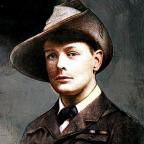
- Offline
- Your most dear friend.
2 years 9 months ago #65
by snowman
"Straight and narrow is the path."
Replied by snowman on topic Little stories
Medal of Honor citation Private First Class Knappenberger
For conspicuous gallantry and intrepidity at the risk of his life above and beyond the call of duty in action involving actual conflict with the enemy, on February 1, 1944, near Cisterna di Littoria, Italy. When a heavy German counterattack was launched against his battalion, Pfc. Knappenberger crawled to an exposed knoll and went into position with his automatic rifle. An enemy machinegun 85 yards away opened fire, and bullets struck within 6 inches of him. Rising to a kneeling position, Pfc. Knappenberger opened fire on the hostile crew, knocked out the gun, killed 2 members of the crew, and wounded the third. While he fired at this hostile position, 2 Germans crawled to a point within 20 yards of the knoll and threw potato-masher grenades at him, but Pfc. Knappenberger killed them both with 1 burst from his automatic rifle. Later, a second machinegun opened fire upon his exposed position from a distance of 100 yards, and this weapon also was silenced by his well-aimed shots. Shortly thereafter, an enemy 20mm. antiaircraft gun directed fire at him, and again Pfc. Knappenberger returned fire to wound 1 member of the hostile crew. Under tank and artillery shellfire, with shells bursting within 15 yards of him, he held his precarious position and fired at all enemy infantrymen armed withmachine pistols and machine-guns which he could locate. When his ammunition supply became exhausted, he crawled 15 yards forward through steady machinegun fire, removed rifle clips from the belt of a casualty, returned to his position and resumed firing to repel an assaulting German platoon armed with automatic weapons. Finally, his ammunition supply being completely exhausted, he rejoined his company. Pfc. Knappenberger's intrepid action disrupted the enemy attack for over 2 hours. "Straight and narrow is the path."
Attachments:
The following user(s) said Thank You: Juanma66, Maki
Please Log in or Create an account to join the conversation.
- Maki
-

- Offline
Less
More
- Posts: 1256
- Thank you received: 1781
2 years 8 months ago #66
by Maki
Replied by Maki on topic Little stories
=19.5px This deadly resistance fighter was the Wonder Woman of WWII
One of the leaders of the attack was an Australian woman that Resistance Capt. Henri Tardivat called “the most feminine woman I know.” Her name was Nancy Wake. But as she and her men approached the factory that night, there was a problem. A sentry spotted them. Wake sprang at him just as he was about to shout a warning, clamped a forearm beneath his jaw, and snapped his head back.
The man’s body slipped quietly to the ground.“She is the most feminine woman I know,” Tardivat added, “but when the fighting starts, “then she is like five men.”
Wake had a bounty of 5 million Francs on her head.From April 1944 until the liberation of Paris the following August, Wake served as a top British agent in German-occupied France. She personally led attacks on German installations, including the local Gestapo headquarters in Montluçon, sabotaged bridges and trains, and once during a German attack took command of a section whose leader had been killed and directed suppressive fire as the group withdrew.Her courage was never questioned, and “her brain worked with the speed and smoothness of skates on ice,” as Australian Russell Braddon wrote about her.Born in New Zealand and raised in Australia, when the war broke out in 1939, Wake found herself in Marseille married to French industrialist Henri Fiocca, a wealthy, fashionable, and one account says “frivolous” Society woman. But the frivolity ended when she met and befriended captured British officers kept prisoner in the city and eventually began helping them escape to Spain. She also began working as a courier for the Resistance.The Gestapo, aware of her presence but not her identity, dubbed her the “White Mouse” for her ability to slip away and avoid detection.In 1943, her luck ran out.She was arrested in a street sweep in Toulouse, interrogated, and beaten but not identified, and the Resistance was able to free her after four days. She escaped France, leaving Henri behind, first by leaping from the windows of a train, then hiding among bags of coal in the back of a truck, and finally in a forty-seven-hour trek through the mountains.She made it to England where she volunteered for the Special Operations Executive. In April 1944, after training, she parachuted back into occupied France to serve with the Resistance fighters in the Auverge region of southcentral France, where a force of almost 8,000 men headed by Tardivat was hiding in the forests and raiding German facilities. On her person were a million francs for the Resistance groups and plans for their part in the upcoming D-Day invasion.For the jump, she wore silk stockings beneath her coveralls.
Wake before the Second World War. Wake lived and worked with the Resistance group for the next seventeen months, overseeing all British parachute drops, channeling Allied funds to the Resistance, and battling the 22,000 German fighting men in the area. She also served a command function with the Resistance and took part in raids, at one point just escaping death when the car she was riding in was strafed by a German fighter. At another, she travelled 500 km, through mountainous terrain and German-held territory, to report a destroyed radio and code books.
Nancy Wake survived the war and lived until 2011.
Among the decorations Wake received for were the George Medal, 1939–45 Star, France and Germany Star, Defense Medal, British War Medal 1939–45, French Chevalier of the Legion of Honour, French Croix de Guerre with Star and two Palms, the US Medal for Freedom with Palm, and the French Medaille de la Resistance.She was very likely the most decorated woman of the war.
One of the leaders of the attack was an Australian woman that Resistance Capt. Henri Tardivat called “the most feminine woman I know.” Her name was Nancy Wake. But as she and her men approached the factory that night, there was a problem. A sentry spotted them. Wake sprang at him just as he was about to shout a warning, clamped a forearm beneath his jaw, and snapped his head back.
The man’s body slipped quietly to the ground.“She is the most feminine woman I know,” Tardivat added, “but when the fighting starts, “then she is like five men.”
Wake had a bounty of 5 million Francs on her head.From April 1944 until the liberation of Paris the following August, Wake served as a top British agent in German-occupied France. She personally led attacks on German installations, including the local Gestapo headquarters in Montluçon, sabotaged bridges and trains, and once during a German attack took command of a section whose leader had been killed and directed suppressive fire as the group withdrew.Her courage was never questioned, and “her brain worked with the speed and smoothness of skates on ice,” as Australian Russell Braddon wrote about her.Born in New Zealand and raised in Australia, when the war broke out in 1939, Wake found herself in Marseille married to French industrialist Henri Fiocca, a wealthy, fashionable, and one account says “frivolous” Society woman. But the frivolity ended when she met and befriended captured British officers kept prisoner in the city and eventually began helping them escape to Spain. She also began working as a courier for the Resistance.The Gestapo, aware of her presence but not her identity, dubbed her the “White Mouse” for her ability to slip away and avoid detection.In 1943, her luck ran out.She was arrested in a street sweep in Toulouse, interrogated, and beaten but not identified, and the Resistance was able to free her after four days. She escaped France, leaving Henri behind, first by leaping from the windows of a train, then hiding among bags of coal in the back of a truck, and finally in a forty-seven-hour trek through the mountains.She made it to England where she volunteered for the Special Operations Executive. In April 1944, after training, she parachuted back into occupied France to serve with the Resistance fighters in the Auverge region of southcentral France, where a force of almost 8,000 men headed by Tardivat was hiding in the forests and raiding German facilities. On her person were a million francs for the Resistance groups and plans for their part in the upcoming D-Day invasion.For the jump, she wore silk stockings beneath her coveralls.
Wake before the Second World War. Wake lived and worked with the Resistance group for the next seventeen months, overseeing all British parachute drops, channeling Allied funds to the Resistance, and battling the 22,000 German fighting men in the area. She also served a command function with the Resistance and took part in raids, at one point just escaping death when the car she was riding in was strafed by a German fighter. At another, she travelled 500 km, through mountainous terrain and German-held territory, to report a destroyed radio and code books.
When France was finally liberated, Wake learned her husband Henri had been captured, tortured, and killed by the Gestapo and that his (and her) wealth was gone. In the years after the war, she held several British intelligence positions, got remarried, and lived to age 98. She died in 2011 requesting that her ashes be spread over the mountains where she had fought.“When I got off that damned bike… I couldn’t stand up. I couldn’t sit down, I couldn’t walk. When I’m asked what I’m most proud of doing during the war, I say: ‘The bike ride’,” she later said.
“That will be good enough for me,” she said.
Nancy Wake survived the war and lived until 2011.
Among the decorations Wake received for were the George Medal, 1939–45 Star, France and Germany Star, Defense Medal, British War Medal 1939–45, French Chevalier of the Legion of Honour, French Croix de Guerre with Star and two Palms, the US Medal for Freedom with Palm, and the French Medaille de la Resistance.She was very likely the most decorated woman of the war.
The following user(s) said Thank You: snowman, Juanma66, Damni
Please Log in or Create an account to join the conversation.
- 43 birthday is today (57)

